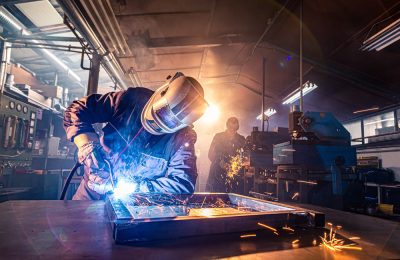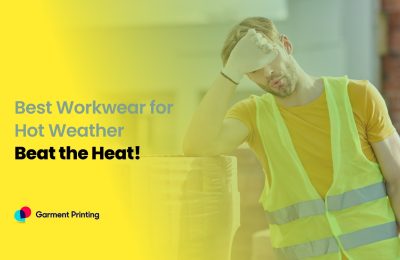|
Getting your Trinity Audio player ready...
|
Understanding what to wear in a warehouse is crucial, as most positions within this setting are physically demanding. Choose workwear that keeps you safe and comfortable. So, your attire for warehouse employment should prioritise safety and comfort. You spend considerable time on your feet and around moving machinery. Your warehouse may have dress code guidelines and regulations, but general considerations apply to most warehouse occupations.
The appropriate attire makes a substantial difference in your comfort level at the end of the day. Read about what you should wear to work in a warehouse, whether you’re new to the industry or a seasoned veteran.
What Is Warehouse Workwear?
There is no specific uniform dress code for warehouses, as every facility has policies and safety standards. However, wearing loose-fitting, comfortable apparel and closed-toe shoes is generally advised. Avoiding donning anything that could become entangled in machinery or pose a safety risk is essential.

Warehouse, industrial, and manufacturing employees should wear professional and comfortable clothing. To be in good condition, apparel must be neat, unwrinkled, wrinkle-free, clean, and well-maintained.
Suggested Read: How To Wash Your Workwear To Make Them Last Longer?
Workers at the factory wear orange(Hi-Vis) vests, while supervisors and engineers wear yellow vests. In an industrial, construction, or manufacturing environment, employees should be dressed appropriately. This labour can be performed while wearing plaid shirts, fleece pullover sweaters, and long-sleeved tops. Khaki work pants, cargo pants, or a denim vest appear fantastic with this type of work attire.
As long as the clothing is comfortable, employees can wear it without worrying about getting it dirty. Plaid and denim shirts are popular among industrial workers. Even though cargo khaki jackets are still fashionable in cold weather, they can be worn for warmth. Workers must dress appropriately, maintaining neat and clean attire that allows them to perform their duties safely and efficiently. Many prefer hoodies because they are machine washable, ensuring easy maintenance and cleanliness.

Recommended Read: Work Pants: How To Select the Right One?
Appropriate Workwear for Your Workplace!
The appropriate attire makes a substantial difference in your comfort level at the end of the day.
Stylish and Protective Footwear
Every weekday, warehouse employees spend hours walking and standing on concrete. This abrasive, unyielding surface taxes the feet, ankles, and knees. Without the proper footwear, leg and foot discomfort can become excruciating. And this worsens as movements progress.
Recommended Read: Tough and Durable: The Best Workwear Shoes for Heavy Duty
Fortunately, the proper footwear can prevent this issue. To locate the appropriate footwear for your occupation, you must make the right considerations when selecting your footwear. Your shoes with closed toes will keep you safe, and the support and cushioning will protect your feet, ankles, and knees and promote improved posture.
Personal Protective Equipment (PPE workwear)
This second piece of advice for what to wear to work in a warehouse emphasises safety. Depending on your job duties, your warehouse should provide you with personal protective equipment (PPE).

For instance, if you move a significant amount of inventory, you will likely have gloves that improve your grip and safeguard your hands from sharp edges. If there is debris in the air, safety eyewear will be worn. Your PPE will be an essential component of your daily work attire.
Custom Clothing
Even though most warehouses do not enforce a stringent dress code, you should avoid wearing loose clothing. If loose apparel gets caught on something, it can slow you down. Moreover, it poses a safety risk, mainly if you operate near a machine with moving parts. Stay safe by wearing clothes that suit nicely and do not restrict your movement.
Everyday achievement is facilitated by wearing appropriate footwear, PPE, and well-fitting clothing. Stay safe and pleasant on the job with these suggestions.
What Should be Worn in Cold Warehouses?
Here is a list of essential apparel for cold weather:
Shoes
You will spend significant time standing in a chilly warehouse; therefore, wear comfortable and waterproof shoes in mud and water. You should avoid developing blisters or calluses on your soles.
Read More: When to Replace Your Work Boots?
Gloves
These are necessary for outdoor labour to prevent your hands from becoming cold and catching a chill. If you operate indoors, you may need inventory management tools compatible with touchscreens.
Hood or mask
A hood or balaclava mask keeps the cranium warm and prevents sunburn outdoors. Ensure it fits snugly over your ears and will not come off while you work.
Shirt with lengthy sleeves
Wear long sleeves when working outside. You can also wear long sleeves under your freezer parka if you are inside.
Thermal Pants
Thermal pants are an excellent way to keep your legs toasty and dry. Wear them underneath your trousers or jeans to avoid having to change.
Jacket
Specialised commercial freezer lacquer It’s always a plus to possess. A hooded jacket is advantageous because it can withstand negative temperature decreases.
Read More: Stay Warm and Productive with the Best Winter Work Jackets
Cold chain logistics consists of temperature-controlled storage, processing, and transport of products from domestic to international locations. Whether working in port logistics or warehousing, employees must wear clothing that can withstand the demanding nature of their jobs. Wearing the appropriate protective clothing is essential to complete a full day’s work in such chilly environments.
Suggested Read: Best Lightweight Jackets for Men: Guide to Comfort & Style
Conclusion
In conclusion, it is critical to dress appropriately for a warehouse job, stressing the necessity of both safety and comfort. Employees are protected from the hazards of warehouse work by wearing appropriate apparel, which includes non-loose fitting garments, protective footwear, and necessary Personal Protective Equipment (PPE).
Specialised clothing is essential for those working in colder warehouses because it protects them from the elements and helps them do their jobs effectively. Always dress appropriately whether you’re an experienced warehouse worker or just starting. Remember that clothing correctly is crucial to your safety, comfort, and the practical completion of tasks in various challenging warehouse environments.
Here are a few more recommended reads from our blog,





